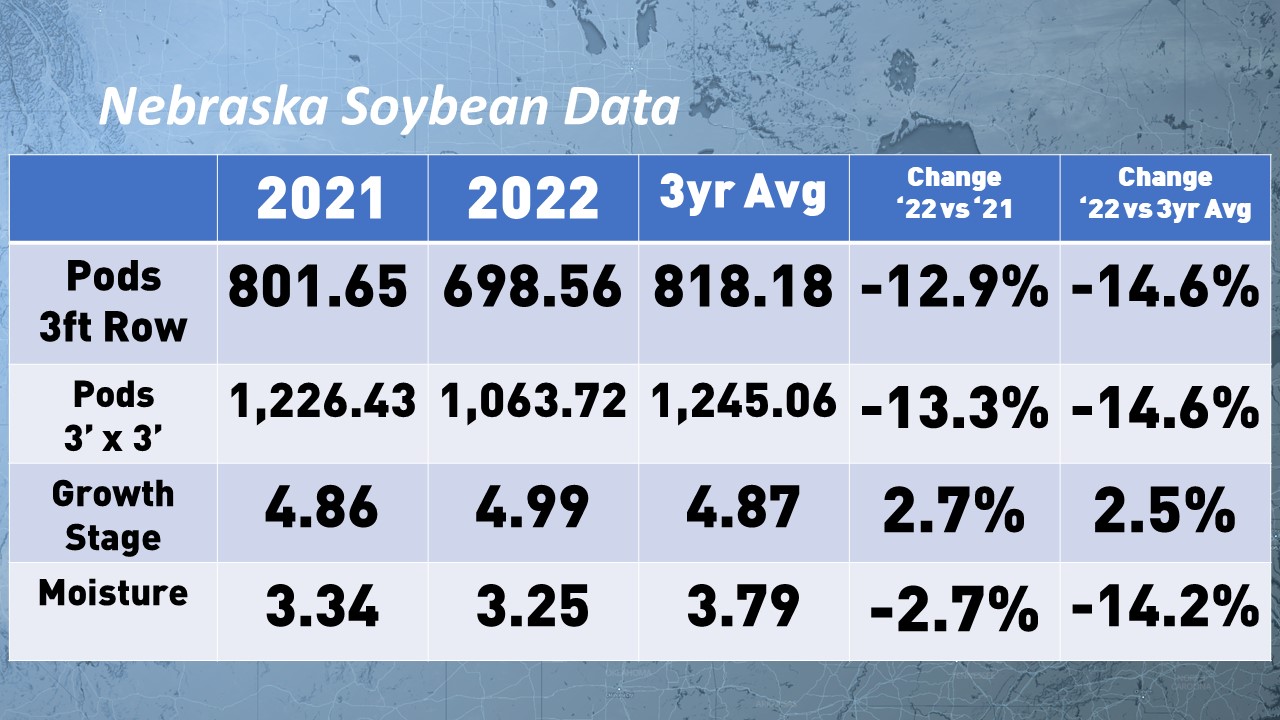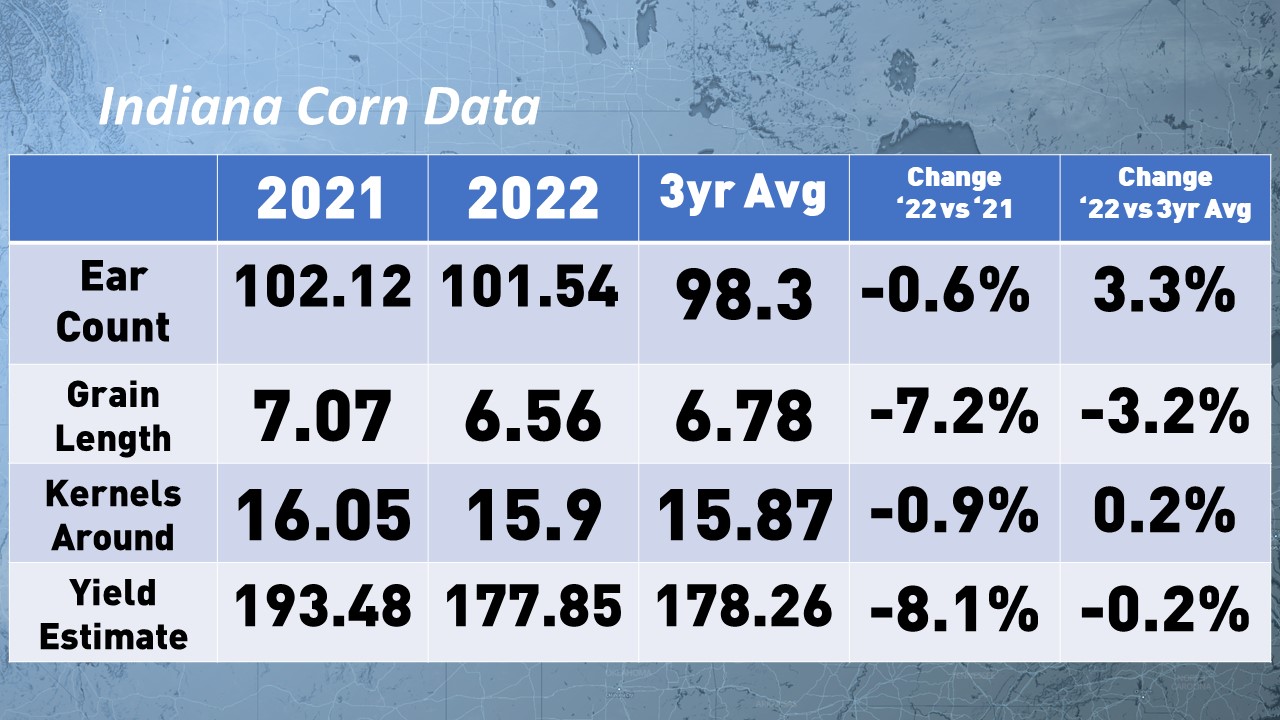Pro Farmer Crop Tour, Day 2: Weather Scars Mark Nebraska, Indiana Fields Hit-Or-Miss

Last Thursday, USDA's drought monitor showed D1 to D4 drought levels spanning the West, including Nebraska.
Tuesday's Crop Tour trek through eastern Nebraska gave scouts a glimpse at the moderate to exceptional drought Mother Nature has brought down on soil and crops this growing season.

Western Leg of Pro Farmer Crop Tour 2022
Brent Judisch, western leg scout and Iowa farmer, says Nebraska's stress-riddled corn crop is even more bizarre than he could have imagined.
"We had some ears with tip-back from the top three inches to the bottom two inches," he says. "Zipper ears and top throwback is common, but not on both ends of the ear — it was consistent from top-down and bottom-up. That's something I've never seen before."
Cass co NE is dry. Big cracks in the soil #pftour22 pic.twitter.com/HyfnLjT1xQ — Ted Seifried (@TheTedSpread) August 23, 2022
Lack of rain is only one part of the stress story this season, according to Judisch, He says drought, heat and hail created the perfect storm, pushing down yields in the 17 to 35 bu. per acre range.

Irrigated corn managed to hang on, but didn't hold an average. Scouts counted 140 bu. to 150 bu. per acre in some fields, which is down roughly 35 bu. to past years. Local producers, however, feel all hope is lost.
"These ears are still upright, for the most part. A lot of mine have dropped, which means rain is not going to help," says Randy Huls, Cortland, Neb. farmer. "We're looking at [harvesting] next week for those short season, early plants."
Huls says he hasn't harvested in August since 2012.

Soybean's story is even more grim than corn in Nebraska, as Judisch reports the state's 2022 soybean crop is the worst he's seen in his 10 years of Crop Tour.
"This year, these beans are showing stress in the afternoon when the leaves are upside down," he says. "There are areas in the field where there's some browning going on, where they've given up."
While scouting in the Western leg of #PFTour22 today, we saw some challenges as a result of late plantings, replant on both corn and beans, a late May frost, and multiple hail storms. pic.twitter.com/9Mmn6JxgDY — Taranis Ag (@TaranisAg) August 23, 2022
Historically, Nebraska soybeans have performed well; particularly in the past few years according to year-over-year data from USDA.
The view from Indiana looks much different than Nebraska, with some saying the eastern leg's crops are mixed and patchy.
Eastern Leg Pro Farmer Crop Tour 2022
Driving up to corn fields in Indiana, the crop looks healthy, according to AgDay's Michelle Rook. However, as eastern leg crop consultant Mark Bernard got into the field, he was disappointed to find spots with brittle-snap and tip-back.
"This goes back to the moisture situation and heat," Bernard says. "It's certainly not the seven- to-eight-inch-type ear we like to see."

Local producers know this tale all too well, as late planting got the best of some Indiana and Illinois corn fields this spring, followed by extreme weather .
Some nasty storm damage in McLean County, Illinois. The band of shredded, and lodged corn went for 4 miles. #pftour22 pic.twitter.com/suDqGDgSMX — Zach Egesdal (@ZachEgesdal) August 23, 2022
Greg Chalfant, Winchester, Ind., farmer says his corn averaged 205 bu. per acre in 2021. This year, he foresees an average of 190 bu. per acre.
The drought has let up a bit in Indiana and Illinois allowing for late-planted soybeans to shift into high gear.

This year's pod counts are running higher than last year and the three-year average of 1,149 pods.
McLean county Illinois really clean beans #pftour22 pic.twitter.com/v8NIp3iV2R — Mike (@BerdoMike) August 23, 2022
"Soybeans are looking really good," says Kevin Lemenager, Morovia, Ind., farmer. "We've had timely rains in August, and that's usually when beans are made. "I've got a lot of high hopes about our soybean yields."
For exclusive access to professional grade news, analysis and advice, subscribe to Pro Farmer here.







